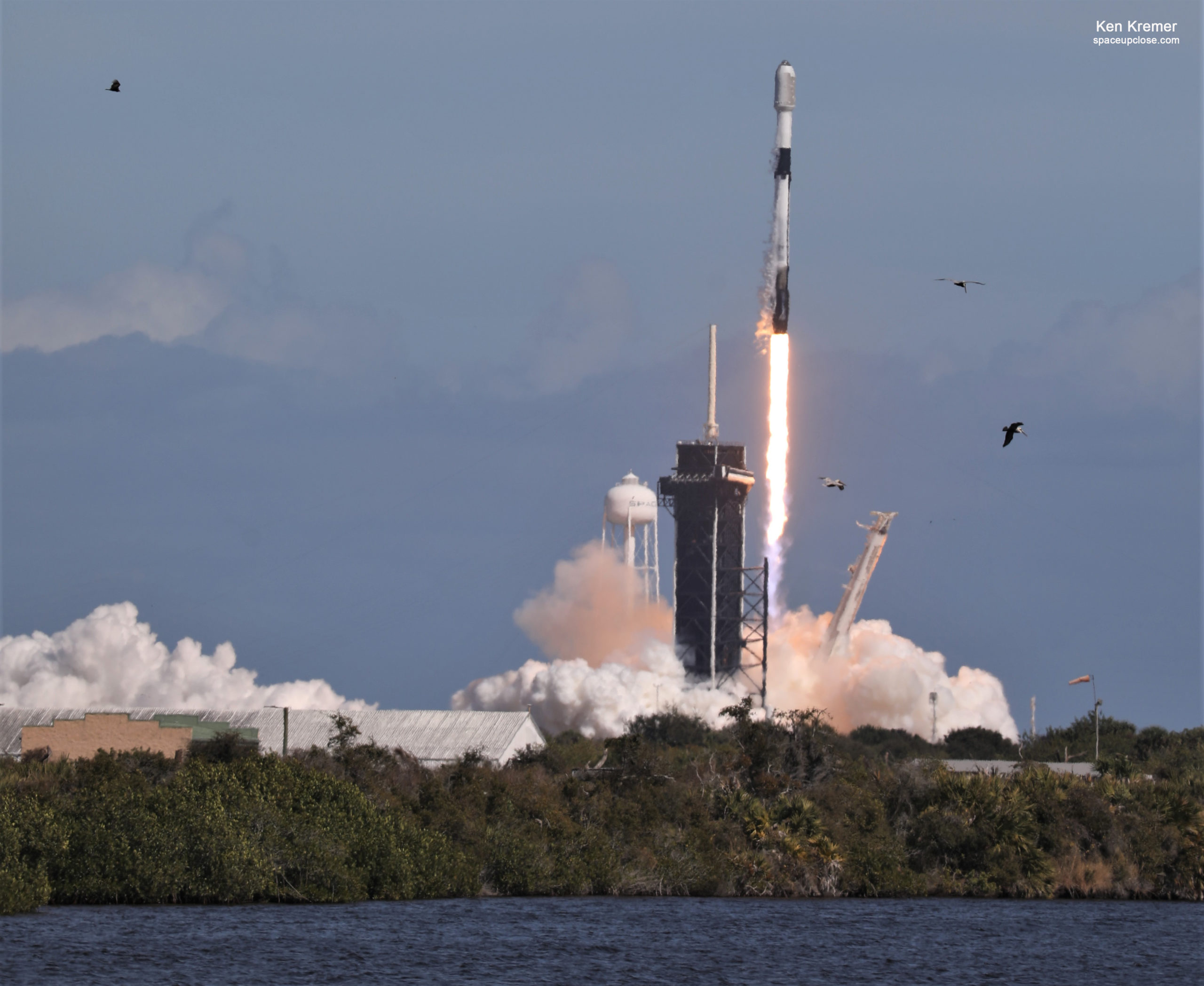
For SpaceUpClose.com & RocketSTEM
KENNEDY SPACE CENTER, FL – Barely one day after launching to their intended low earth orbit location on Thursday Feb. 3, a swarm of brand new SpaceX Starlink internet satellite were doomed to death when a geomagnetic storm hit Earth on Friday, Feb. 4, creating increased atmospheric particle density and drag that caused about 80% of them to lose speed and lose altitude and caused them to go into safe mode and eventually crash back to Earth.
“Unfortunately, the satellites deployed on Thursday were significantly impacted by a geomagnetic storm on Friday. These storms cause the atmosphere to warm and atmospheric density at our low deployment altitudes to increase,” SpaceX said in a statement published Feb. 8.
Some of the Starlinks have already reentered the Earth’s atmosphere and been destroyed and others will follow suite soon.
SpaceX had just launched its third Falcon 9 rocket in three days at launch time Thursday, Feb. 3 and successfully delivered the next batch of 49 Starlink high speed internet satellites to low Earth orbit while flying on a once rare southernly trajectory from Florida’s Spaceport – continuing a blistering launch pace opening 2022.
According to estimates, SpaceX expects to lose about 40 of the 49 flat paneled Starlink satellites launched Feb. 3 directly due to the solar storm
“Preliminary analysis show the increased drag at the low altitudes prevented the satellites from leaving safe-mode to begin orbit raising maneuvers, and up to 40 of the satellites will reenter or already have reentered the Earth’s atmosphere,” SpaceX announced.
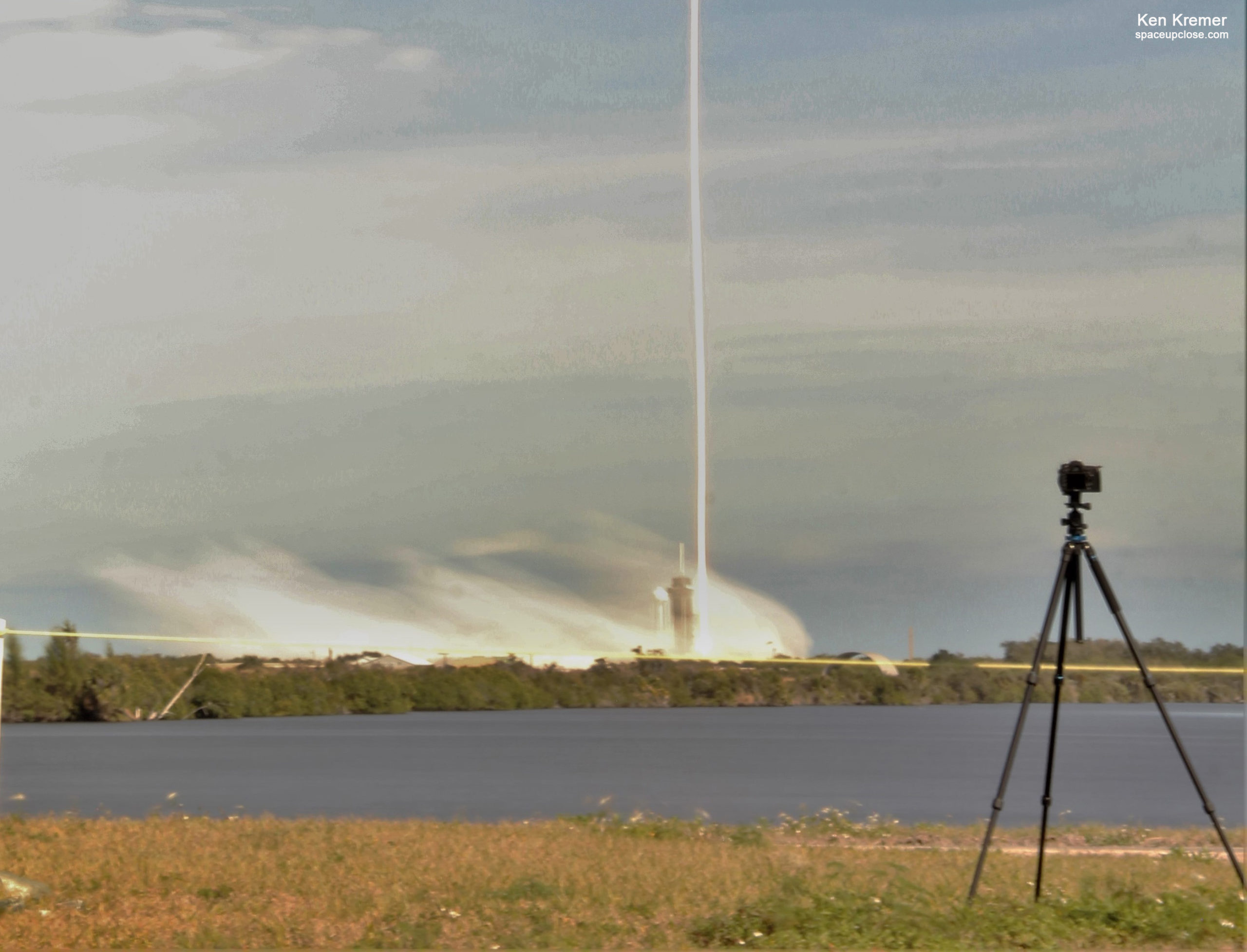
Launch of the 229 foot tall (70 meter) Falcon 9 took place Thursday, Feb. 3 at 1:13 p.m. EST (1813 GMT) from Launch Complex 39A (LC-39A) at Kennedy Space Center in Florida carrying a payload of 49 Starlink broad band high speed internet satellites to low Earth orbit on the Starlink 4-7 mission – during an instantaneous launch window.
The veteran SpaceX Falcon 9 roared aloft into picture perfect skies on a beautiful weekday afternoon from pad 39A on NASA’s Kennedy Space Center and nailed a landing on an ocean going droneship some eight minutes later in the Atlantic Ocean.
The Starlinks were deployed as planned all at once about 15 minutes after launch into their intended initial orbit and a perigee, or low point, about 130 miles (210 km) above Earth
“Falcon 9’s second stage deployed the satellites into their intended orbit, with a perigee of approximately 210 kilometers above Earth, and each satellite achieved controlled flight.”
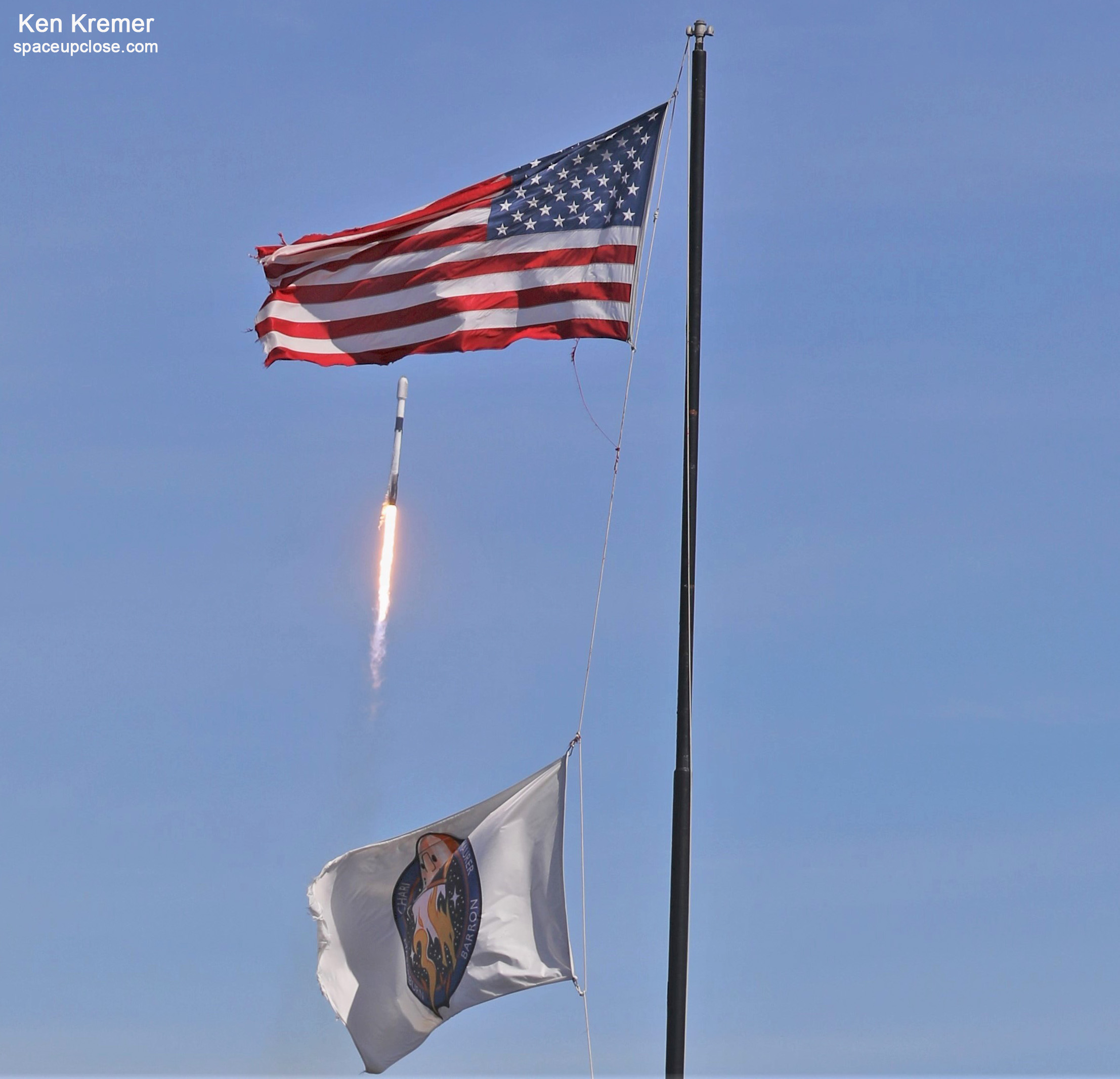
The magnitude of the solar storm was unexpected
The solar storms result directly from periodic coronal mass ejections (CMEs) from the sun creating massive ejections of plasma and magnetic fields from the sun- that can interfere with and wreak havoc on orbiting satellites, the ISS, airplanes and power grids on Earth.
After the solar storm and going into safe mode they were unable to exit and propel themselves to their higher operation orbit of about 340 miles altitude above Earth.
“Onboard GPS suggests the escalation speed and severity of the storm caused atmospheric drag to increase up to 50 percent higher than during previous launches. The Starlink team commanded the satellites into a safe-mode where they would fly edge-on (like a sheet of paper) to minimize drag—to effectively “take cover from the storm”—and continued to work closely with the Space Force’s 18th Space Control Squadron and LeoLabs to provide updates on the satellites based on ground radars.”
After the solar storm and going into safe mode they were unable to exit and propel themselves to their higher operational orbit of about 340 miles altitude above Earth.
NOAA did issue a space weather forecast prior to the Starlink launch predicting a “moderate” geomagnetic storm hitting Earth on Feb 2/3 that was caused by a solar flare that occurred Jan. 29.
“Multiple analyses by SWPC forecasters indicated an approximate CME speed of 662 km/s and an at Earth arrival window as early as late 1 Feb to early 2 Feb ET.”
Typically, CME arrival is first detected at the NOAA DSCOVR spacecraft (about 1 million miles away) before Earth arrival. Any geomagnetic storm conditions are likely to persist into 3 Feb at weakening levels, therefore, a G1 (Minor) geomagnetic storm watch is in effect for 03 February,” said NOAA.
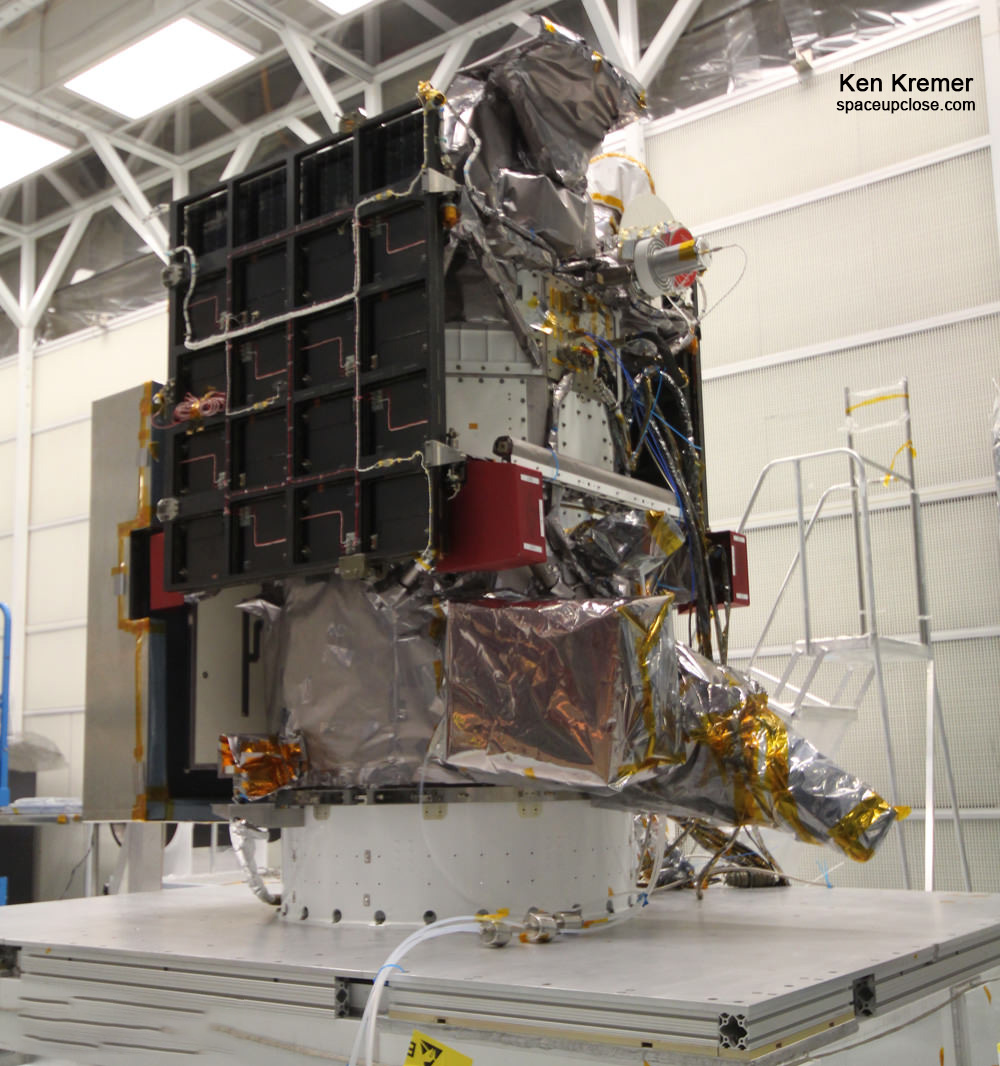
Some folks wonder why they should care about space weather and its potentially catastrophic effects and why the US and other nations launch satellites like NASA NOAA DSCOVR to monitor space weather.
The doomed Starlink satellites are a perfect example of the economic losses.
Fortunately they were designed in a way to orbit with no risk to other satellites.
“The deorbiting satellites pose zero collision risk with other satellites and by design demise upon atmospheric reentry—meaning no orbital debris is created and no satellite parts hit the ground.”
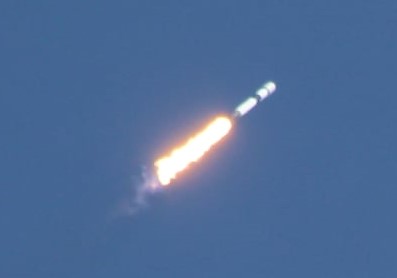
The SpaceX Starlink constellation aims to provide high speed, low latency broad band internet across the globe at low cost – about $99 per month
The payload comprises 49 upgraded Starlink internet communications satellites manufactured by SpaceX in their Redmond, Washington production facility – enlarging the existing and burgeoning broadband constellation to over 2000 launched thus far.
The Starlink satellites were released from the upper stage at T+plus 15 minutes, 31 seconds, into an orbit ranging in altitude between 130 miles and 210 miles (210 by 339 kilometers) at an inclination of 53.2 degrees to the equator.
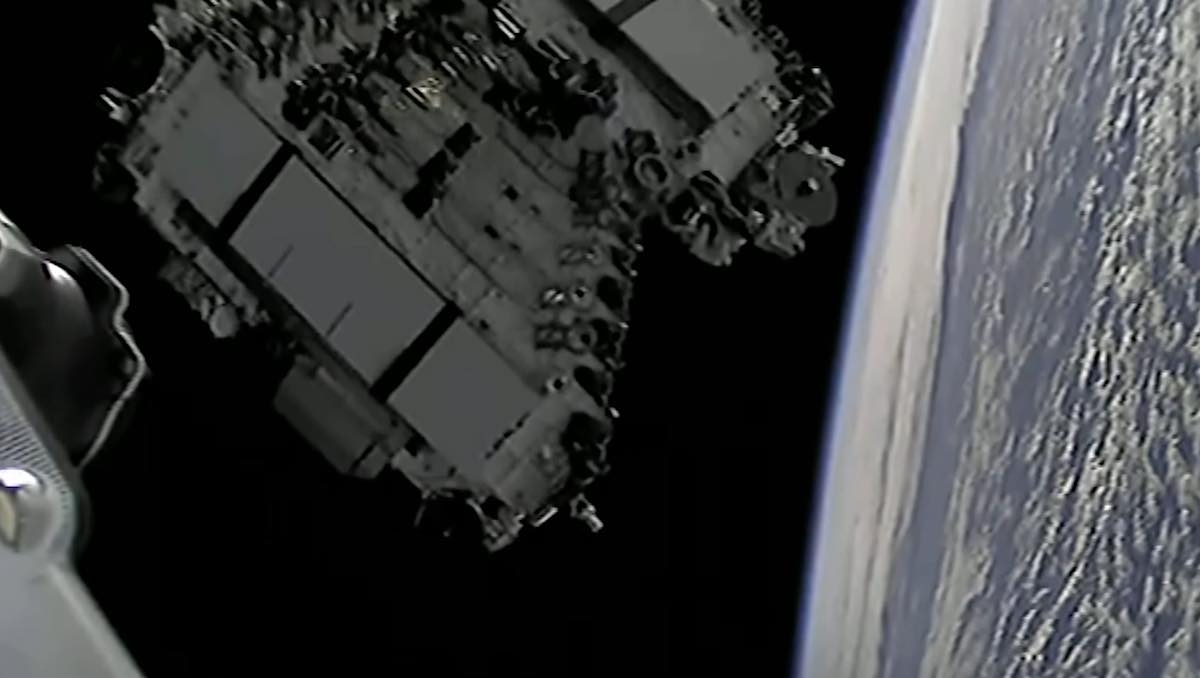
This Starlink 4-7 mission counts as the 36th Starlink internet satellite mission and raises the total number of Starlink satellites launched to 2,091, including prototypes and test versions.
A running tally is maintained by astrophysicist Jonathan McDowell of Harvard
https://planet4589.org/space/stats/star/starstats.html
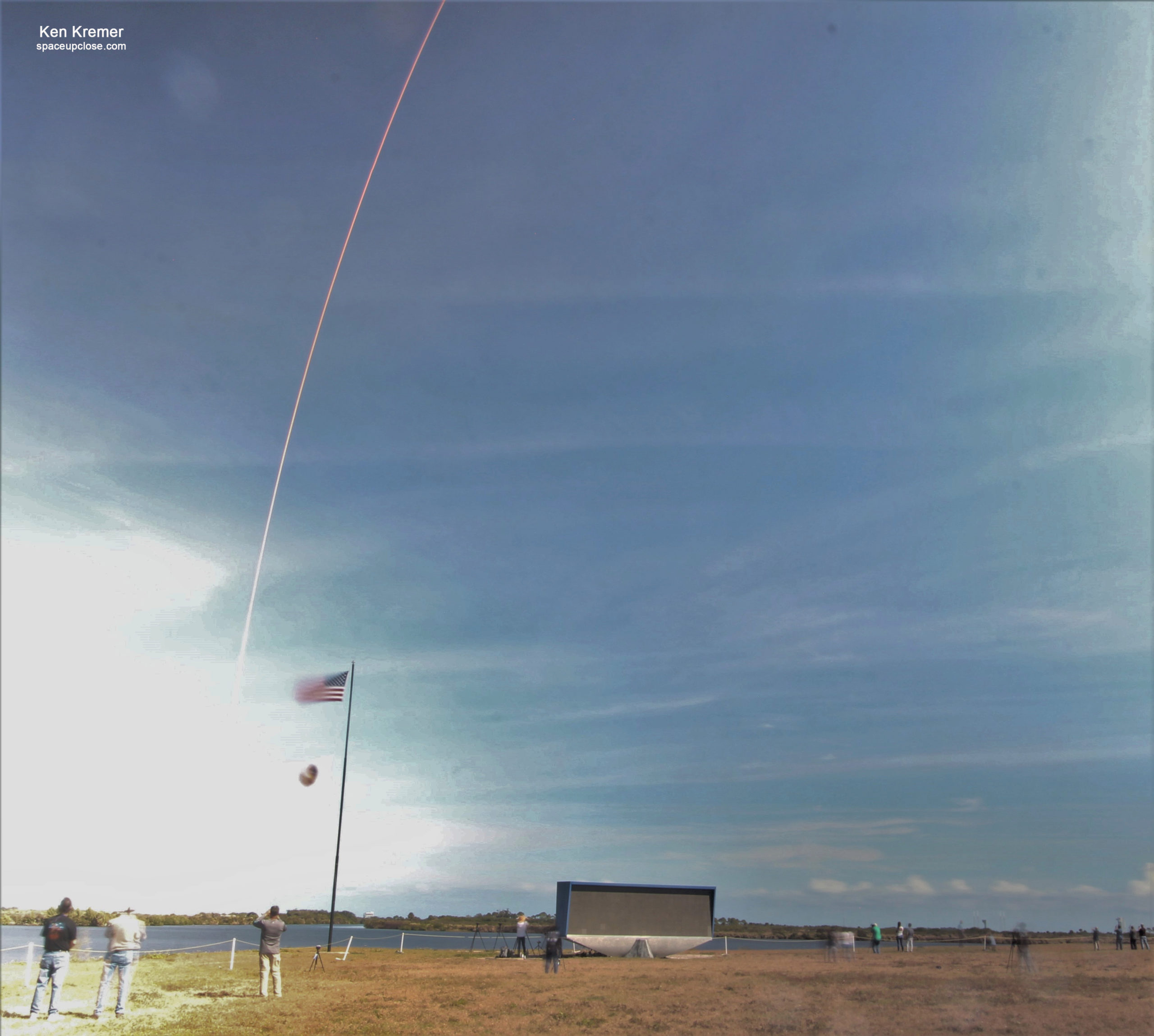
Here is the entire statement from SpaceX on FEBRUARY 8, 2022
GEOMAGNETIC STORM AND RECENTLY DEPLOYED STARLINK SATELLITES
On Thursday, February 3 at 1:13 p.m. EST, Falcon 9 launched 49 Starlink satellites to low Earth orbit from Launch Complex 39A (LC-39A) at Kennedy Space Center in Florida. Falcon 9’s second stage deployed the satellites into their intended orbit, with a perigee of approximately 210 kilometers above Earth, and each satellite achieved controlled flight.
SpaceX deploys its satellites into these lower orbits so that in the very rare case any satellite does not pass initial system checkouts it will quickly be deorbited by atmospheric drag. While the low deployment altitude requires more capable satellites at a considerable cost to us, it’s the right thing to do to maintain a sustainable space environment.
Unfortunately, the satellites deployed on Thursday were significantly impacted by a geomagnetic storm on Friday. These storms cause the atmosphere to warm and atmospheric density at our low deployment altitudes to increase. In fact, onboard GPS suggests the escalation speed and severity of the storm caused atmospheric drag to increase up to 50 percent higher than during previous launches. The Starlink team commanded the satellites into a safe-mode where they would fly edge-on (like a sheet of paper) to minimize drag—to effectively “take cover from the storm”—and continued to work closely with the Space Force’s 18th Space Control Squadron and LeoLabs to provide updates on the satellites based on ground radars.
Preliminary analysis show the increased drag at the low altitudes prevented the satellites from leaving safe-mode to begin orbit raising maneuvers, and up to 40 of the satellites will reenter or already have reentered the Earth’s atmosphere. The deorbiting satellites pose zero collision risk with other satellites and by design demise upon atmospheric reentry—meaning no orbital debris is created and no satellite parts hit the ground. This unique situation demonstrates the great lengths the Starlink team has gone to ensure the system is on the leading edge of on-orbit debris mitigation.
…………..
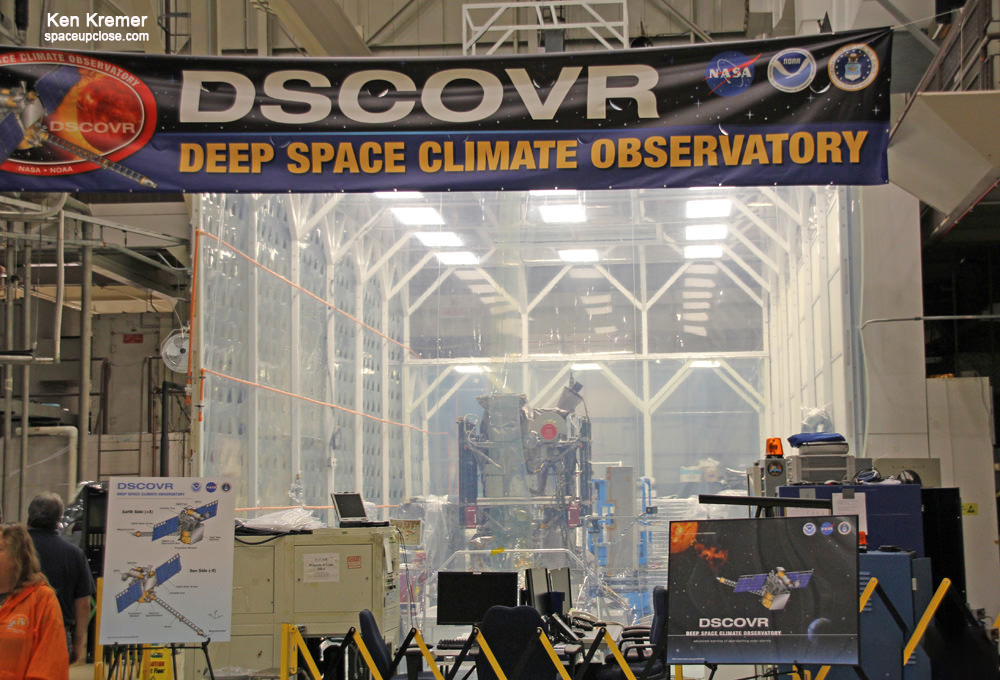
Watch Ken’s continuing reports about SpaceX Starlink , SpaceX Crew and Cargo Dragons, Artemis, SLS, Orion and NASA missions, DART, Lucy Asteroid mission, Blue Origin and Space Tourism, Commercial Crew and Starliner and Crew Dragon and onsite for live reporting of upcoming and recent SpaceX and ULA launches including Crew 1 & 2 & 3, ISS, Solar Orbiter, Mars 2020 Perseverance and Curiosity rovers, NRO spysats and national security missions and more at the Kennedy Space Center and Cape Canaveral Space Force Station.
Stay tuned here for Ken’s continuing Earth and Planetary science and human spaceflight news: www.kenkremer.com –www.spaceupclose.com – twitter @ken_kremer – email: ken at kenkremer.com
Dr. Kremer is a research scientist and journalist based in the KSC area, active in outreach and interviewed regularly on TV and radio about space topics.
………….
Ken’s photos are for sale and he is available for lectures and outreach events
Please consider supporting Ken’s work by purchasing his photos and/or donating at Patreon:
https://www.patreon.com/kenkremer
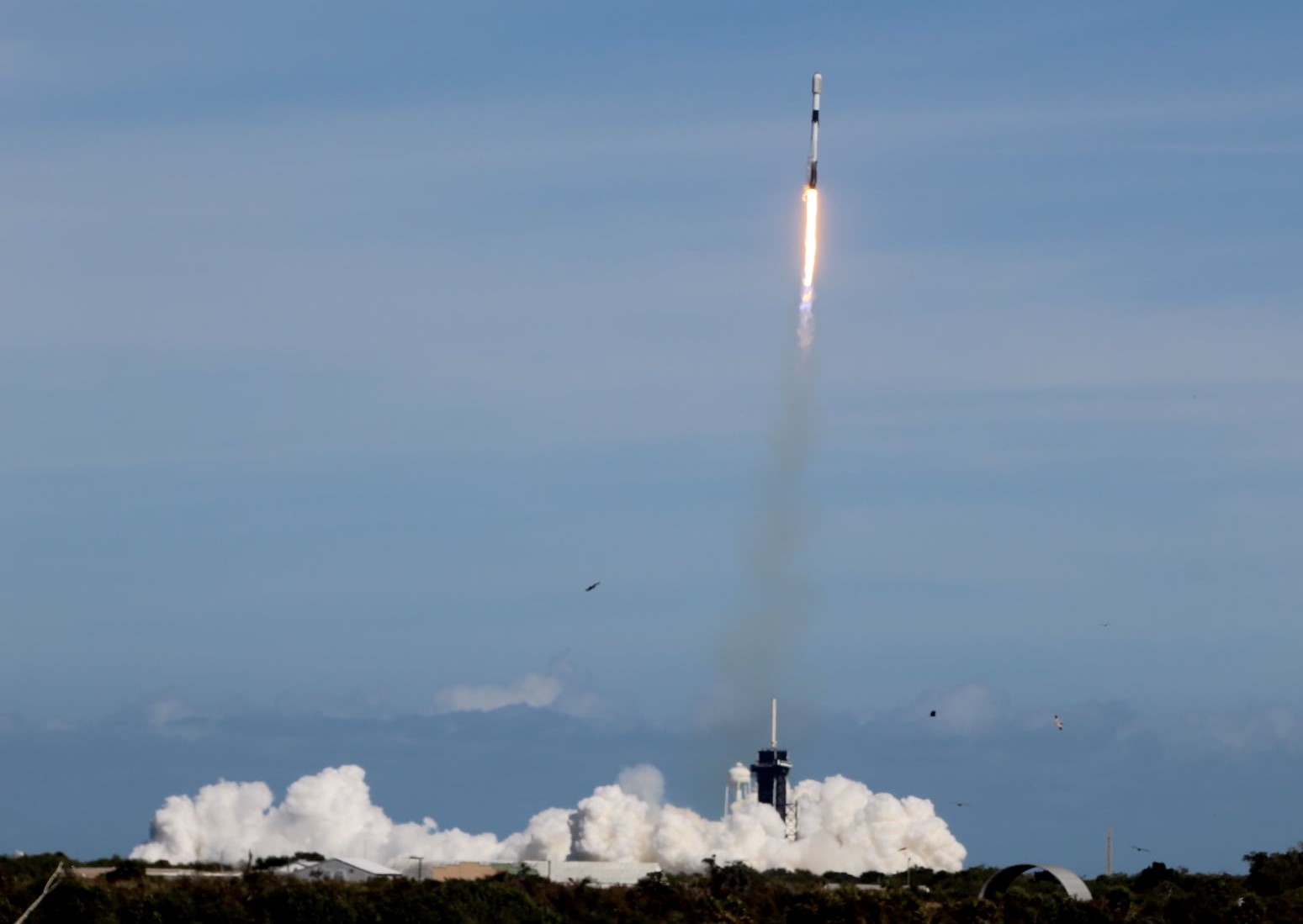
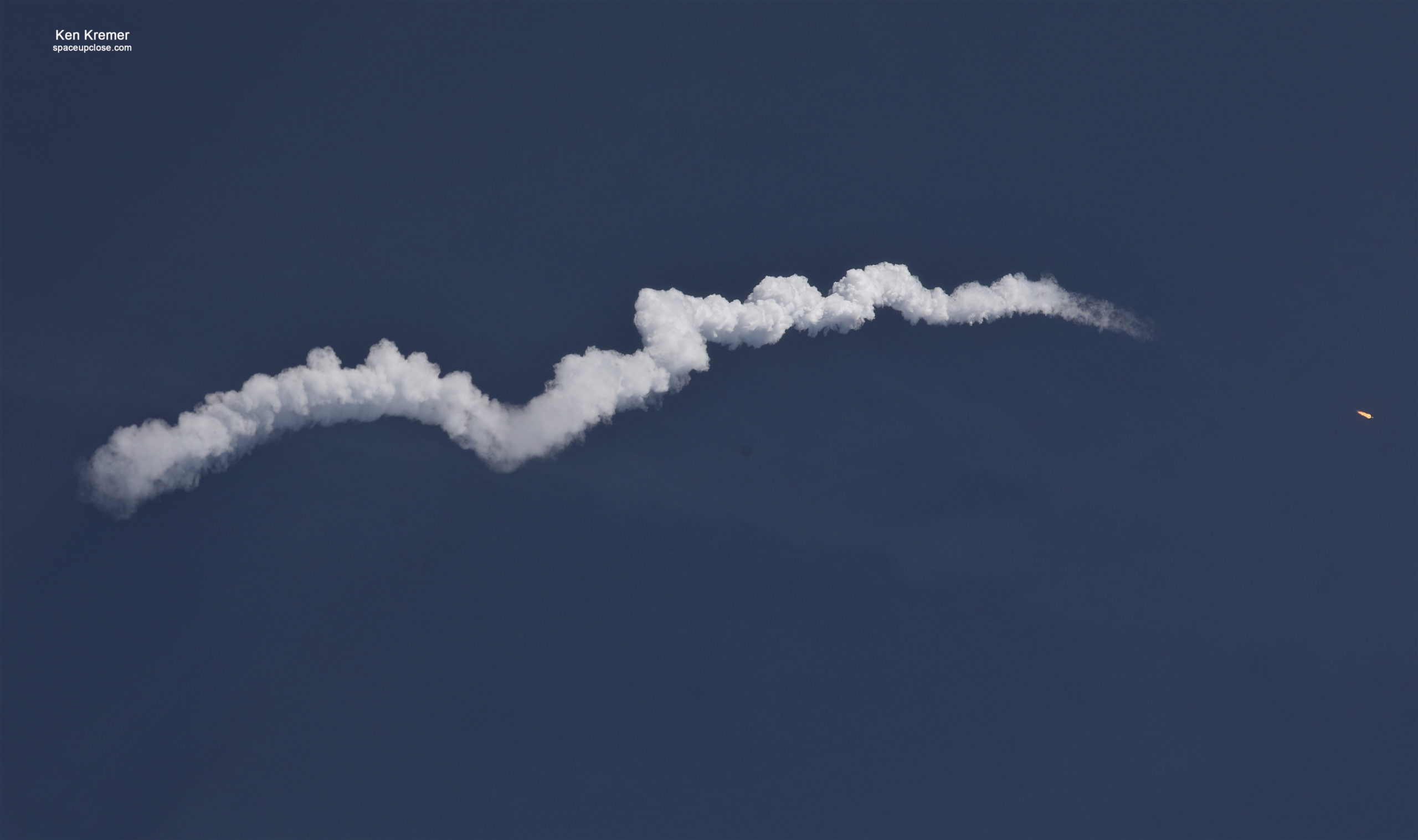
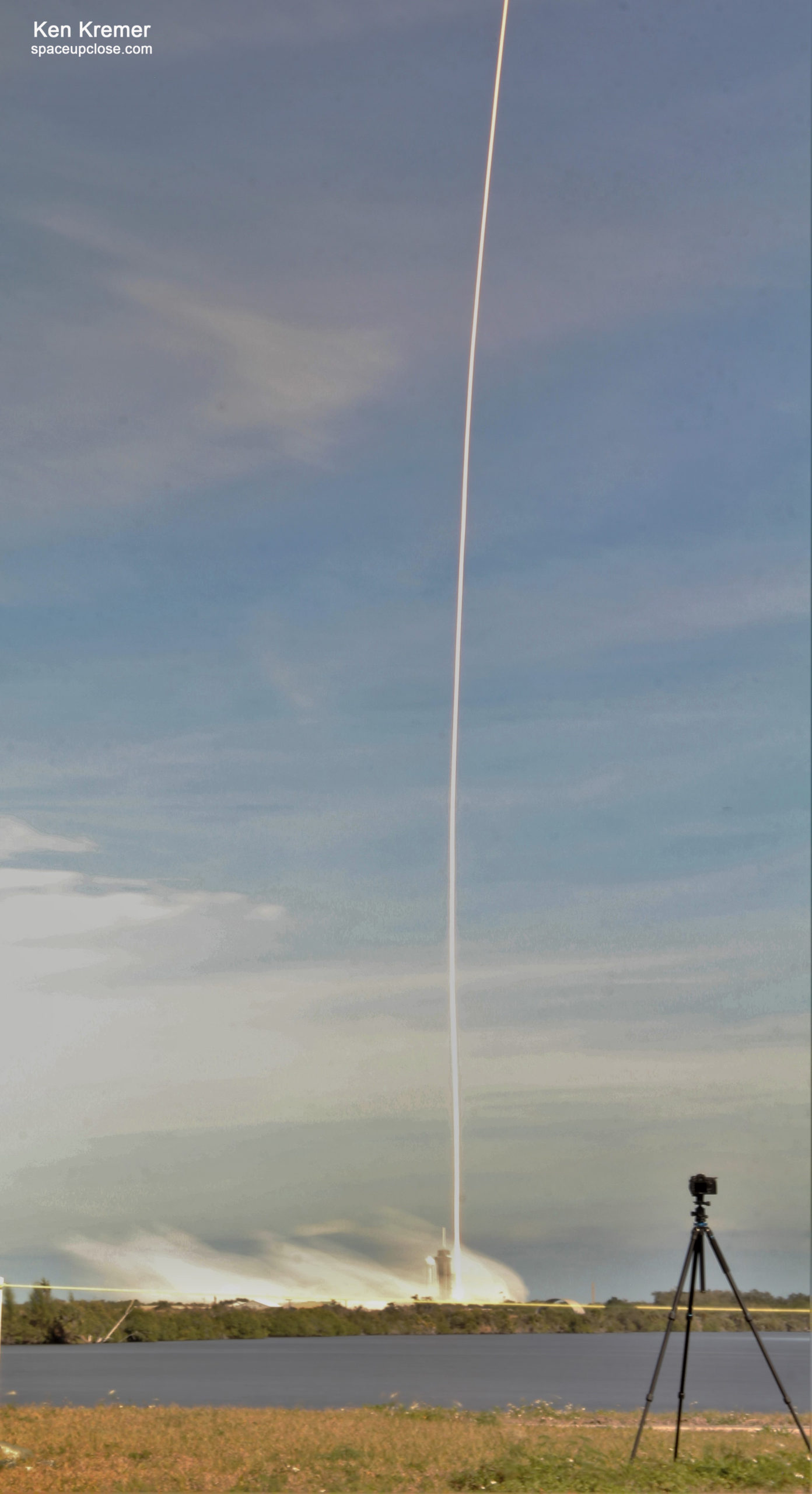
x



